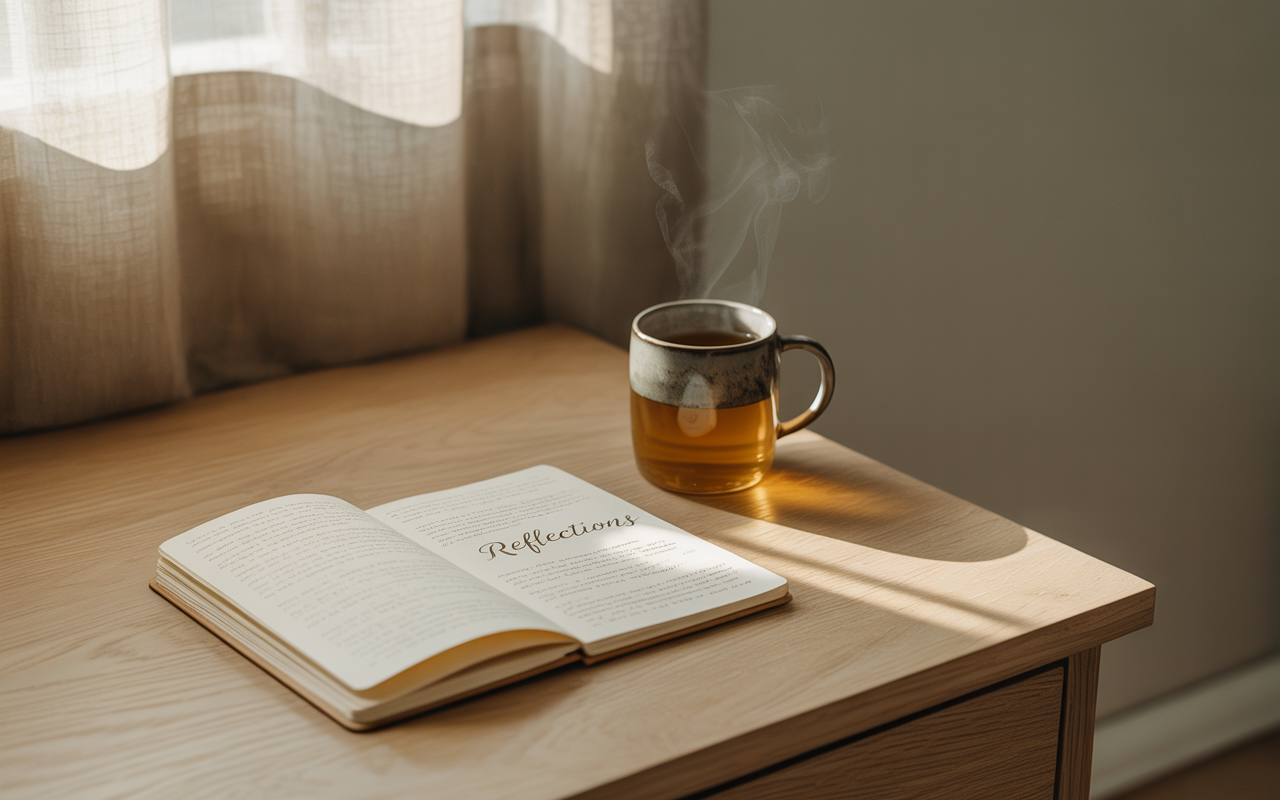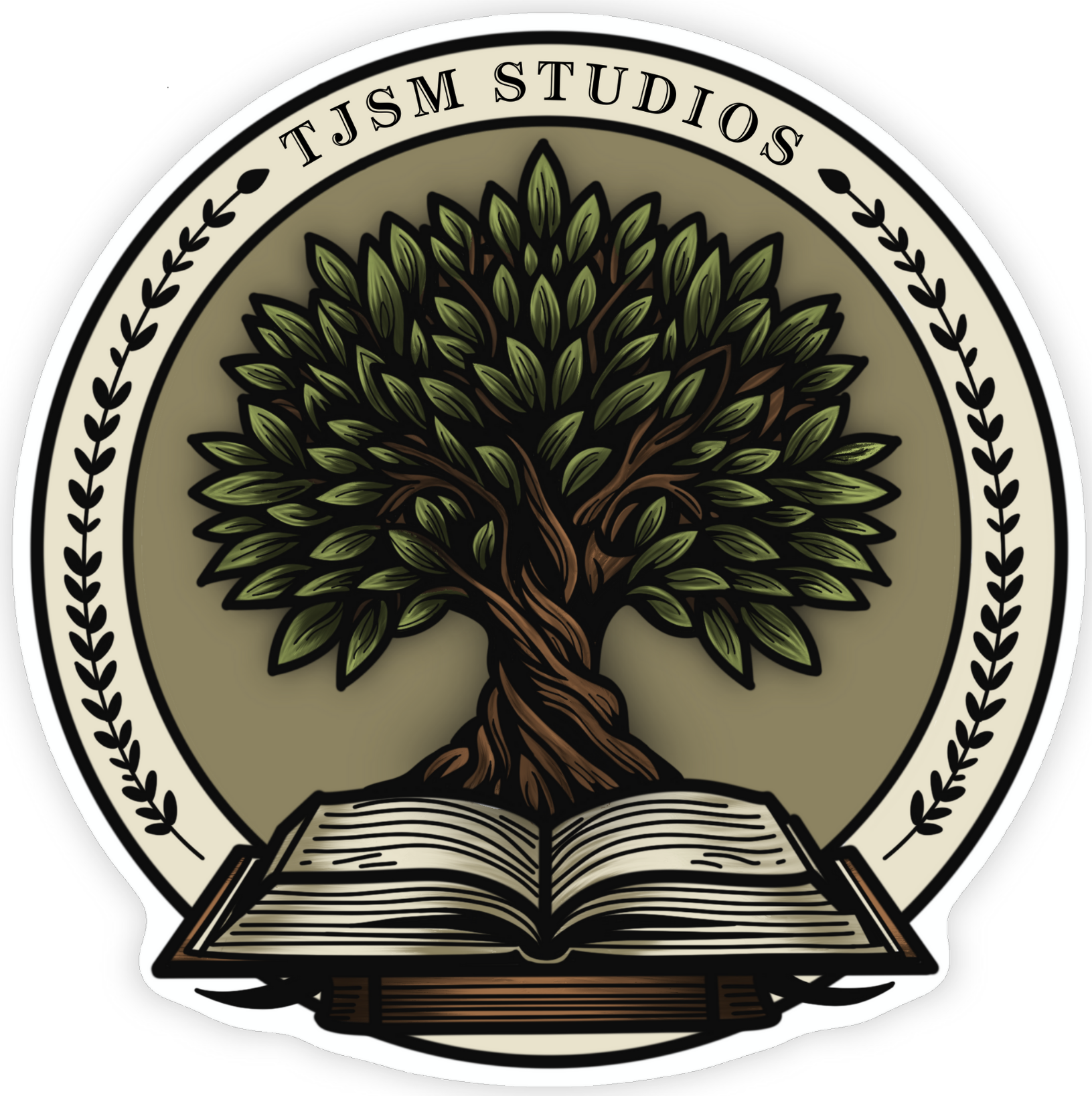This post may contain affiliate links, meaning I may earn a small commission at no extra cost to you.

Imagine Your Perfect Day
There’s a particular kind of exhaustion that seeps in when your calendar is full but your spirit feels empty. You check off task after task, yet something feels… off. Like you’re swimming against a current instead of flowing with it. If you’ve ever ended a day wondering, “Why am I so tired even though I didn’t do that much?”, you’re not alone.
This post is for the dreamers, the planners, the slowly-healing, the entrepreneurs with fluctuating energy and full hearts. The ones who crave a day that feels nourishing, not punishing.
At TJSM Studios, we call this pursuit your ideal daily rhythm, not a rigid schedule, but a fluid framework that honors your body’s natural energy, your creative spark, and your very human limitations. Especially for those navigating chronic illness, neurodivergence, or burnout recovery, building a rhythm that works with you, not against you, can be revolutionary.
So today, let’s explore how to:
- Understand your unique energy patterns
- Journal your way into a rhythm that feels like a soft exhale
- Apply practical tools to gently guide your days
This is not about productivity hacks. It’s about finding your flow.
Understanding Your Unique Energy Landscape
The Problem with Traditional Productivity
Most time management systems assume our energy is constant. That we can be “on” from 9 to 5, five days a week, without question. But if you’re living with chronic illness, neurodivergence, or even just recovering from hustle culture, you know that’s not real life.
Energy-led planning starts from a radical premise: your energy is the compass, not the clock.
When we ignore our natural fluctuations, we burn out, mentally, emotionally, and physically. When we learn to notice and honor our natural peaks and troughs, we reclaim agency over our time and wellbeing.
How to Map Your Energy
For a few days, try jotting down notes in the morning, midday, afternoon, and evening:
- When do you feel most focused?
- When do you crave rest or stillness?
- What triggers fatigue or emotional dips?
This doesn’t have to be scientific. Use colors, emojis, or simple words, whatever helps you see the rhythm beneath your routines. Over time, you’ll spot patterns.
For example, you might notice that deep work feels best mid-morning, but anything creative flows more freely in the quiet of evening. Use that intel. Work with your energy, not against it.
Your Non-Negotiables & Drainers
Once you know your rhythm, get clear on your “musts.”
- What absolutely needs to happen daily or weekly?
- What consistently drains you?
Meetings that go on too long? Phone calls? Social media rabbit holes?
Make a list. Then set boundaries with grace, especially around your high-energy windows. This is sacred time for your most aligned work or rest.
Journaling Your Way to Your Ideal Rhythm
Why Journaling Helps You Design Your Days
The truth is, no one else can tell you what your perfect day looks like. That wisdom lives inside you. Journaling helps you access it.
When you write without judgment, you begin to hear your real needs, not just what your inner critic says you should do.
And if you’ve never done this before, don’t worry. We’re not aiming for beautiful prose, just gentle noticing.
Need a place to start? Try these reflective prompts from our post on gentle journaling to reignite your energy.
Prompts to Explore Your Rhythm
- When do I feel most alive and focused?
- What type of tasks align with my peak energy times?
- What activities genuinely recharge me?
- How much rest and recovery do I truly need?
- What would a “perfectly gentle” morning routine look like?
- What would a “flare-friendly” day look like?
Let yourself dream a little. This is where your flexible daily rhythm begins.
Envisioning Your Flow
Imagine your day in three parts: morning, midday, evening. Now, sketch out a gentle rhythm for each.
It might look like this:
- Morning: Wake slowly, sip coffee, journal for 5-10 minutes, 15 minutes of movement (stretching, spinning, vibration plate, or rebounding).
- Midday: Focused work, then a nourishing lunch, followed by a screen-free pause.
- Evening: Nature walk, Side Hustle (writing or editing), hobby time (reading or watching YouTube), a warm bath, end-of-day reflection.
Flow matters more than rigid time blocks. You’re creating a container, not a cage.
Designing Your Flexible Framework
Moving from Vision to Gentle Structure
Now that you’ve reflected, let’s gently design your day.
Use your peak energy times for your most mentally or creatively demanding tasks. Reserve your low-energy windows for admin, tidying, or rest. Think in terms of energy, not hours.
And don’t forget: “Done gently still gets done.”
You’re not falling behind, you’re flowing forward.
Key Elements to Include
To craft a sustainable schedule, consider integrating these elements:
- Movement: Even five minutes of stretching or a short walk.
- Nourishment: Regular meals, mindful hydration, and joyful snacks.
- Rest & Play: Downtime is not a reward, it’s a requirement.
- Creative or Deep Work: Time for your most fulfilling tasks.
- Connection: Reach out to someone who energizes or grounds you. Try these prompts.
- Reflection: End the day with a short journal entry or check-in. Use our free printable check-in prompts to guide you.
Let your rhythm evolve. This isn’t a contract, it’s a conversation with yourself.
On Low-Energy Days
Your rhythm won’t be perfect. And that’s the point. Some days will require more softness.
Here are a few ways to adapt:
- Swap out high-energy tasks for lighter ones.
- Use a “Meaning Aligner” list – this is the one item that if you complete it would make your day meaningful, instead of a full to-do list.
- Move meetings if needed.
- Double down on rest. Not as a last resort, but as a first aid.
Progress doesn’t always look like action. Sometimes it looks like rest.
Final Thoughts: Your Rhythm, Your Rules
Designing your ideal daily rhythm is an act of self-trust.
It’s a way of saying, “I believe I know what I need, and I’m willing to listen.”
You don’t need to do it perfectly. You don’t need to get it right on the first try. What matters is starting.
✨ Begin with one small shift this week. Maybe you journal each morning. Or move your creative time to when you actually feel creative. Maybe you just start noticing, without judgment.
This is your rhythm. You get to revise it as you grow.
🔗 Want a supportive place to begin? Explore our Who Am I? self-discovery journal for guided prompts and gentle structure.
Suggested AI Prompt for Readers
You can use this prompt in ChatGPT or any AI assistant to help you take action on this blog topic.
“Help me create a simple, gentle daily routine that incorporates a 15-minute quiet reflection in the morning, a midday rest break, and an evening wind-down routine. Assume I have fluctuating energy levels and suggest ways to adapt for low-energy days. Prioritize self-compassion and flexibility.”
10 Guided Journaling or Planning Prompts
- If my energy had a voice, what would it be telling me today about how it wants to be used?
- What is one small, simple change I can make to my morning routine that would feel more nourishing?
- When I think about my ideal day, what emotions or feelings come to mind first? How can I invite more of those feelings into my actual day?
- What is one activity I currently do that drains my energy, and how might I gently reduce or reframe it?
- What does “rest” truly mean to me, beyond just sleep? How can I incorporate more authentic rest into my week?
- Describe a “perfectly gentle” low-energy day. What would I allow myself to do, and what would I release?
- How can I use my peak energy times to do the work that truly lights me up or moves my business forward?
- What is one non-negotiable act of self-care I can commit to every single day, no matter what?
- If my daily rhythm were a piece of music, what kind of rhythm would it have? How can I compose a more harmonious tune?
- What wisdom have my body and mind tried to share with me about my energy lately? Am I listening?
We’d love to hear what rhythm you’re discovering. Leave a comment below and let us know what’s resonating, or what you’re still figuring out. We’re walking this journey with you.
